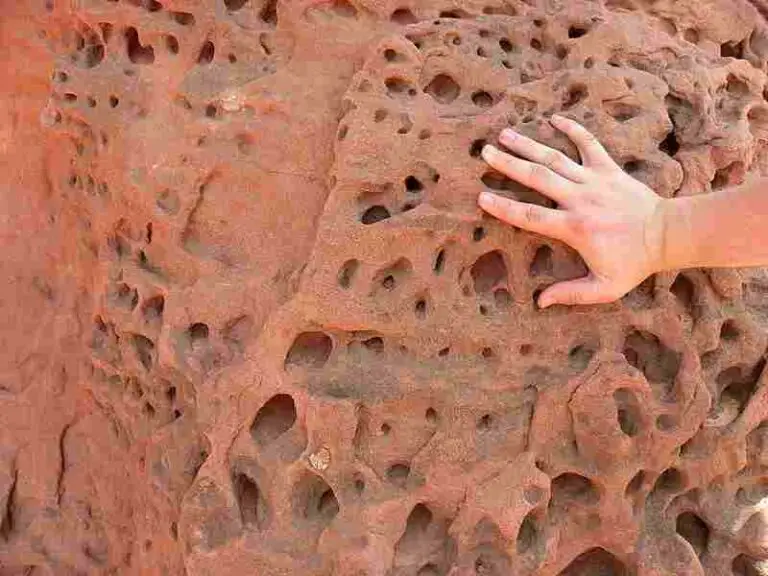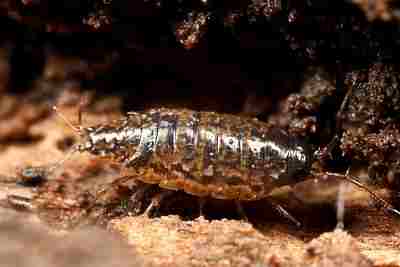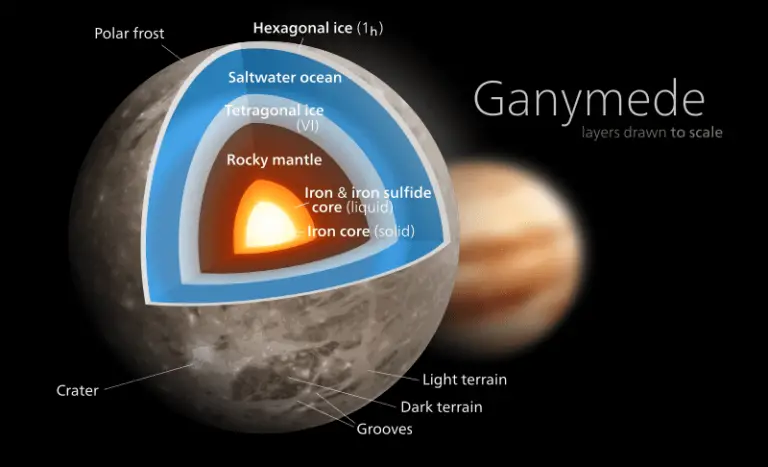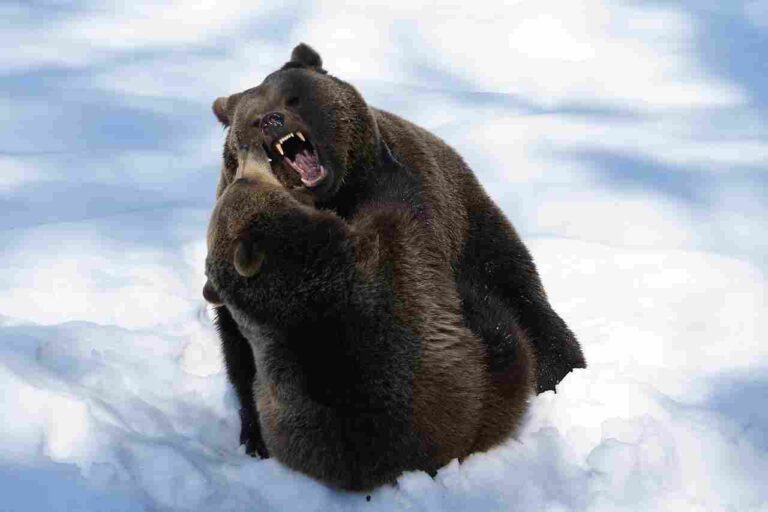29+ Decomposers in the Rainforest and Their Basic Characteristics/Functions
Decomposers in the rainforest ecosystem include saprophytes like Bacillus spp., Myxobacteria, detritivores like beetles, and scavengers like king vulture, which are involved in the breakdown and recycling of organic matter and nutrients.
| Organism | Characteristics |
Ecological Function
|
| Actinobacteria | Gram-positive bacteria, branching filaments, found in soil and water. |
Key decomposers, nutrient cycling, some involved in nitrogen fixation.
|
| Bacillus spp. | Gram-positive, rod-shaped bacteria, form endospores. |
Important for nutrient cycling, some species act as probiotics, nitrogen fixation.
|
| Burkholderia spp. | Gram-negative bacteria with diverse morphologies. |
Nitrogen fixation, plant growth promotion, some contribute to bioremediation.
|
| Clostridium spp. | Gram-positive, anaerobic, spore-forming bacteria. |
Anaerobic fermentation, aid in cellulose degradation, nitrogen fixation.
|
| Myxobacteria | Gram-negative bacteria with gliding motility. |
Cooperative behavior, predation of other microorganisms, nutrient cycling.
|
| Pseudomonas spp. | Gram-negative, motile, rod-shaped bacteria. |
Plant growth promotion, nutrient cycling, some contribute to bioremediation.
|
| Streptomyces spp. | Gram-positive bacteria with filamentous, mycelial structure. |
Key decomposers, produce antibiotics, contribute to soil suppressiveness.
|
| Xanthomonas spp. | Gram-negative, rod-shaped bacteria, pathogenic to plants. |
Nitrogen fixation, biofilm formation, potential role in nutrient cycling.
|
| Aspergillus spp. | Filamentous fungi with a distinctive conidiophore structure. |
Key decomposers, mycorrhizal relationships, used in fermentation processes.
|
| Cladosporium spp. | Common mold fungi with dark pigmentation. |
Decomposers of organic matter, some associated with diseases in plants.
|
| Entomophthora spp. | Fungi primarily infecting insects, complex life cycles. |
Entomopathogens, regulate insect populations, contribute to nutrient cycling.
|
| Fusarium spp. | Filamentous fungi with plant pathogenic and saprophytic species. |
Plant pathogens, involved in decay of plant material, nutrient cycling.
|
| Lentinula edodes (Shiitake) | Edible mushroom with a cap and stem structure. |
Decomposer of wood, mycorrhizal relationships, nutrient cycling.
|
| Mycena spp. | Genus of small to medium-sized mushrooms. |
Decomposers of organic matter, potential applications in mycoremediation.
|
| Trichoderma spp. | Filamentous fungi with mycelial structure. |
Mycoparasites, biocontrol of plant diseases, decomposition of organic matter.
|
| Xylaria spp. | Genus of fungi with diverse morphologies. |
Decomposers of wood, may have symbiotic relationships, potential mycoremediation.
|
| Ants | Social insects belonging to Hymenoptera. |
Essential in nutrient cycling, seed dispersal, symbiotic relationships.
|
| Beetles | Insects belonging to Coleoptera, diverse roles. |
Nutrient cycling through scavenging, herbivory, and pollination.
|
| Centipedes | Arthropods belonging to Chilopoda. |
Predators, contribute to soil aeration and nutrient cycling.
|
| Earthworms | Annelids belonging to Oligochaeta. |
Soil aeration, nutrient cycling, influence microbial activity.
|
| Isopods (Roly-Polies) | Terrestrial crustaceans belonging to Isopoda. |
Feed on decaying organic matter, contribute to nutrient cycling.
|
| Millipedes | Arthropods belonging to Diplopoda. |
Decomposers of plant material, contribute to soil conditioning.
|
| Slugs | Gastropod mollusks with a soft body. |
Contribute to decomposition through herbivory, influence plant communities.
|
| Springtails | Small hexapods belonging to Collembola. |
Contribute to nutrient cycling, serve as a food source.
|
| Termites | Social insects belonging to Isoptera. |
Decompose wood, soil engineers, contribute to nutrient cycling.
|
| Woodlice | Crustaceans belonging to Isopoda. |
Consume decaying plant material, contribute to nutrient cycling.
|
| King Vulture | Large scavenging bird found in the Americas. |
Ecosystem cleanup, nutrient cycling, control disease spread.
|
| Ocelot | Medium-sized wild cat found in the Americas. |
Regulate prey populations, contribute to biodiversity, influence prey behavior.
|
| Turkey Vulture | Large scavenging bird found in North and South America. |
Carrion eater, contribute to disease control, nutrient cycling.
|
*SAPROPHYTES IN THE RAINFOREST/PRIMARY DECOMPOSERS IN THE RAINFOREST
-Bacteria
1. Actinobacteria:
Characteristics:
Gram-positive bacteria with high G+C content in DNA.
Form branching filaments.
Commonly found in soil and aquatic environments.
Ecological Function:
Key decomposers, breaking down complex organic matter.
Play a crucial role in nutrient cycling.
Some strains are involved in nitrogen fixation.
Contribution to Biodegradation:
Produce enzymes capable of breaking down diverse organic compounds.
Effective in degrading complex polymers like cellulose and chitin.
Used in the production of antibiotics and other bioactive compounds.
2. Bacillus spp.:
Characteristics:
Gram-positive, rod-shaped bacteria.
Form endospores, allowing survival in harsh conditions.
Commonly found in soil and the gastrointestinal tracts of animals.
Ecological Function:
Important for nutrient cycling in soil.
Some species act as probiotics in the gut of animals.
Can fix atmospheric nitrogen and produce enzymes.
Contribution to Biodegradation:
Produce a variety of enzymes for breaking down organic matter.
Involved in the decomposition of plant residues.
Used in bioremediation due to their ability to degrade pollutants.
3. Burkholderia spp.:
Characteristics:
Gram-negative bacteria with diverse morphologies.
Widely distributed in soil, water, and plant rhizospheres.
Some species are pathogenic, while others have symbiotic relationships.
Ecological Function:
Nitrogen-fixing capabilities in symbiosis with certain plants.
Involved in plant growth promotion.
Some strains contribute to bioremediation.
Contribution to Biodegradation:
Exhibit metabolic versatility, degrading a range of pollutants.
Used in environmental cleanup due to their ability to break down toxins.
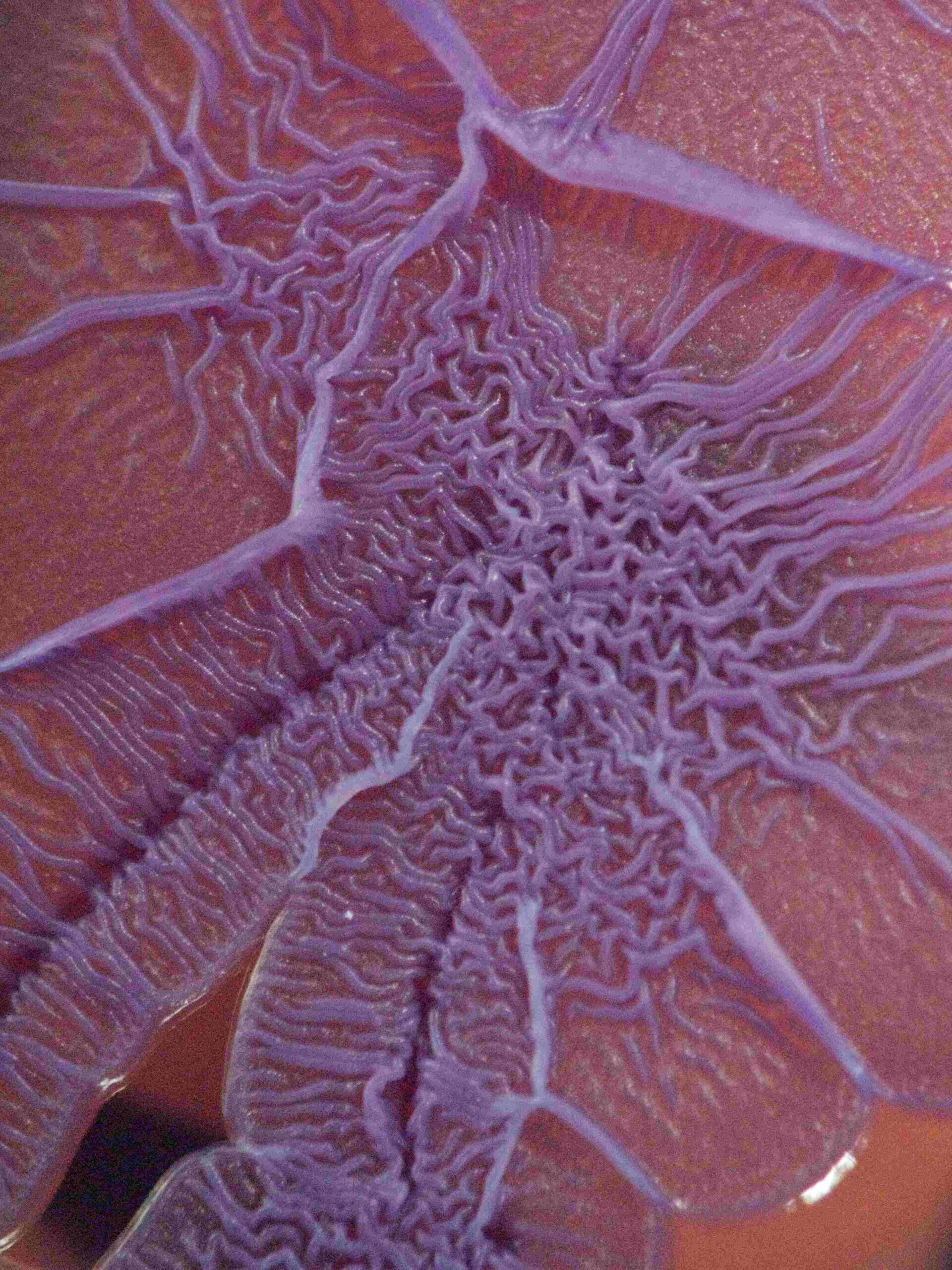
4. Clostridium spp.:
Characteristics:
Gram-positive, anaerobic, spore-forming bacteria.
Found in soil, sediments, and the digestive tracts of animals.
Includes both beneficial and pathogenic species.
Ecological Function:
Important in anaerobic fermentation processes.
Some species aid in cellulose degradation in the digestive systems of herbivores.
Play a role in nitrogen fixation.
Contribution to Biodegradation:
Involved in the decomposition of organic matter in anaerobic environments.
Used in waste treatment processes for organic material breakdown.
5. Myxobacteria:
Characteristics:
Gram-negative bacteria with gliding motility.
Form multicellular structures during certain life stages.
Commonly found in soil and decaying organic matter.
Ecological Function:
Exhibit cooperative behavior, forming swarms to prey on other microorganisms.
Involved in predation of other bacteria and fungi.
Play a role in nutrient cycling in soil ecosystems.
Contribution to Biodegradation:
Release extracellular enzymes for the degradation of complex organic substances.
Act as predators of other microorganisms, contributing to microbial balance.
6. Pseudomonas spp.:
Characteristics:
Gram-negative, motile, rod-shaped bacteria.
Widely distributed in soil, water, and on plant surfaces.
Known for metabolic diversity and adaptability.
Ecological Function:
Involved in plant growth promotion and protection.
Important for nutrient cycling in various environments.
Some species form symbiotic relationships with plants.
Contribution to Biodegradation:
Produce a range of enzymes involved in the degradation of pollutants.
Used in bioremediation due to their ability to break down hydrocarbons.
Play a role in the degradation of pesticides and organic pollutants.
7. Streptomyces spp.:
Characteristics:
Gram-positive bacteria with a filamentous, mycelial structure.
Produce spores and have a complex life cycle.
Commonly found in soil and decaying organic matter.
Ecological Function:
Key decomposers, breaking down complex organic compounds.
Produce antibiotics and other secondary metabolites.
Contribute to the soil’s suppressiveness against pathogens.
Contribution to Biodegradation:
Synthesize a variety of enzymes for the degradation of organic matter.
Involved in the decomposition of plant residues.
Play a crucial role in the biotransformation of complex organic compounds.
8. Xanthomonas spp.:
Characteristics:
Gram-negative, rod-shaped bacteria.
Pathogenic to plants, causing diseases in a wide range of crops.
Often transmitted by insects or through contaminated seeds.
Ecological Function:
Some species are involved in the nitrogen-fixing process in symbiosis with plants.
Can form biofilms on plant surfaces.
May have roles in nutrient cycling and soil ecology.
Contribution to Biodegradation:
While some strains can degrade complex organic compounds, the primary focus is on their pathogenicity in plants.
Research on their potential for bioremediation is ongoing.
-Fungi
9. Aspergillus spp.:
Characteristics:
Filamentous fungi with a distinctive conidiophore structure.
Commonly found in soil, decaying vegetation, and indoor environments.
Known for rapid growth and asexual reproduction.
Ecological Function:
Key decomposers of organic matter, breaking down complex polymers.
Some species form mycorrhizal relationships with plants.
Can be important in fermentation processes for food production.
Contribution to Biodegradation:
Produce a wide range of enzymes for the degradation of organic material.
Used in industrial processes for the production of enzymes and organic acids.
Involved in the degradation of pollutants and xenobiotics.
10. Cladosporium spp.:
Characteristics:
Common mold fungi with dark pigmentation.
Ubiquitous in air, soil, and plant surfaces.
Includes both plant pathogens and saprophytic species.
Ecological Function:
Decomposers of organic matter, particularly plant debris.
Some species are associated with diseases in plants.
Can adapt to various environmental conditions.
Contribution to Biodegradation:
Involved in the decay of plant material and organic substances.
Play a role in recycling nutrients in ecosystems.
May have potential in bioremediation processes.
11. Entomophthora spp.:
Characteristics:
Fungi that primarily infect insects.
Produce specialized spores for insect transmission.
Often exhibit complex life cycles involving the insect host.
Ecological Function:
Act as entomopathogens, infecting and killing insects.
Play a role in regulating insect populations in ecosystems.
Can influence insect behavior for their own dispersal.
Contribution to Biodegradation:
Primarily involved in the decomposition of insect biomass.
Play a role in nutrient cycling as they release nutrients back into the ecosystem.
May indirectly impact the decomposition of plant material by controlling insect herbivores.
12. Fusarium spp.:
Characteristics:
Filamentous fungi with both plant pathogenic and saprophytic species.
Commonly found in soil and associated with plants.
Produce asexual and sexual spores for reproduction.
Ecological Function:
Some species act as plant pathogens causing diseases in various crops.
Involved in the decay of plant material and organic matter.
Play a role in nutrient cycling in soil ecosystems.
Contribution to Biodegradation:
Can decompose plant debris and contribute to soil organic matter turnover.
Some strains produce enzymes capable of breaking down complex polymers.
Research on their potential for bioremediation is ongoing.
13. Lentinula edodes (Shiitake Mushroom):
Characteristics:
Edible mushroom species with a cap and stem structure.
Cultivated for culinary purposes and medicinal properties.
Saprophytic, growing on decaying wood or organic matter.
Ecological Function:
Decomposer of wood, particularly hardwoods.
Can form mycorrhizal relationships with certain trees.
Plays a role in nutrient cycling in forest ecosystems.
Contribution to Biodegradation:
Actively involved in breaking down lignin and cellulose in wood.
Used in mycoremediation for biodegradation of pollutants.
Cultivated for its economic and nutritional value.
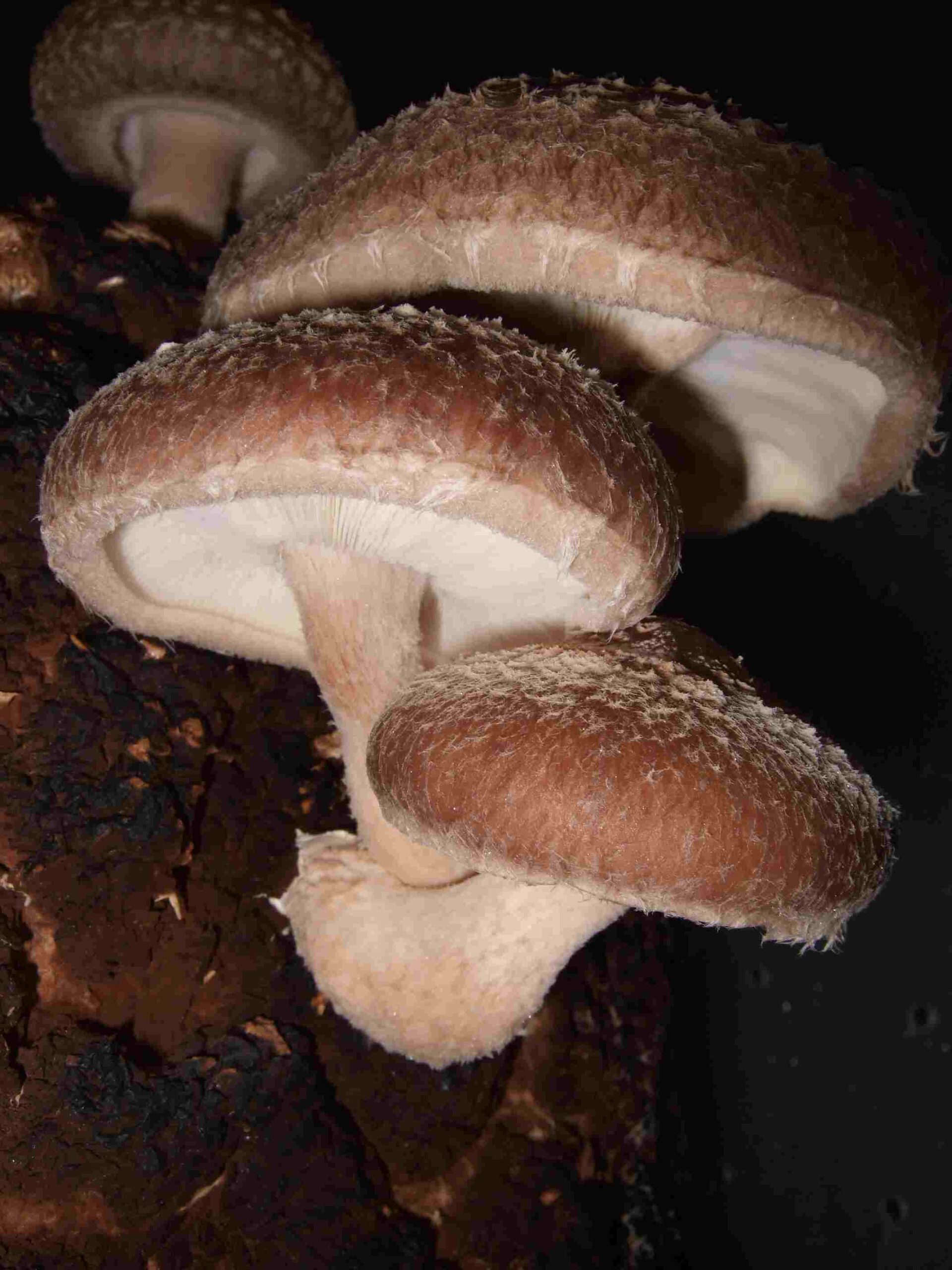
14. Mycena spp.:
Characteristics:
Genus of small to medium-sized mushrooms.
Often have brightly colored caps.
Saprophytic, growing on decaying wood, leaf litter, or soil.
Ecological Function:
Decomposers of organic matter, particularly in forest ecosystems.
Can form mycorrhizal associations with plants.
Contribute to the cycling of nutrients in ecosystems.
Contribution to Biodegradation:
Play a role in breaking down plant material and woody debris.
Involved in the decomposition of organic matter on the forest floor.
May have applications in mycoremediation for environmental cleanup.
15. Trichoderma spp.:
Characteristics:
Filamentous fungi with a mycelial structure. are commonly found in soil and root ecosystems.
Known for their aggressive growth and antagonistic interactions.
Ecological Function:
Act as mycoparasites, attacking and controlling pathogenic fungi.
Play a role in the biocontrol of plant diseases.
Involved in the decomposition of organic matter in soil.
Contribution to Biodegradation:
Produce enzymes for the degradation of fungal cell walls.
Used in bioremediation processes for breaking down pollutants.
Can enhance plant growth and nutrient uptake.
16. Xylaria spp.:
Characteristics:
Genus of fungi with diverse morphologies, including club-like structures.
Commonly found on decaying wood, plant debris, and soil.
Some species are known for their unique shapes and structures.
Ecological Function:
Decomposers of wood and plant material.
May have ecological roles in nutrient cycling.
Some species may form symbiotic relationships with plants.
Contribution to Biodegradation:
Actively involved in breaking down lignin and cellulose in wood.
Contribute to the decomposition of organic matter in forest ecosystems.
Potential applications in mycoremediation.
*DETRITIVORES IN THE RAINFOREST/SECONDARY DECOMPOSERS IN THE RAINFOREST
17. Ants:
Characteristics:
Social insects belonging to the order Hymenoptera.
Varied in size, habitat, and behavior.
Play key roles in ecosystems as herbivores, omnivores, or predators.
Ecological Function:
Essential in nutrient cycling through scavenging and predation.
Act as seed dispersers and aerators of soil.
Some species cultivate fungi in mutualistic relationships.
Contribution to Biodegradation:
Contribute to the breakdown of organic matter through scavenging.
Certain ant species engage in fungiculture, cultivating fungi on organic substrates.
Influence soil structure and nutrient availability through their activities.
18. Beetles:
Characteristics:
Insects belonging to the order Coleoptera.
Diverse in size, shape, and ecological roles.
Play various roles as herbivores, predators, scavengers, and decomposers.
Ecological Function:
Important in nutrient cycling through scavenging and decomposition.
Some species act as pollinators and seed dispersers.
Can influence plant communities through herbivory.
Contribution to Biodegradation:
Decompose dead plant material and contribute to soil organic matter.
Some beetles are involved in the breakdown of animal remains.
Play a role in the recycling of nutrients in ecosystems.
19. Centipedes:
Characteristics:
Arthropods belonging to the class Chilopoda.
Have a long, segmented body with one pair of legs per segment.
Predatory, feeding on a variety of invertebrates.
Ecological Function:
Act as predators, controlling populations of other invertebrates.
Contribute to soil aeration and nutrient cycling.
Play a role in maintaining balance within ecosystems.
Contribution to Biodegradation:
Feed on a variety of invertebrates, including decomposers.
Assist in the breakdown of organic matter through predation.
Contribute to nutrient cycling by processing organic material.
20. Earthworms:
Characteristics:
Annelids belonging to the class Oligochaeta.
Have a segmented body with a moist, slimy epidermis.
Play a crucial role in soil ecology and structure.
Ecological Function:
Important in soil aeration and structure through burrowing.
Contribute to nutrient cycling by processing organic matter.
Influence microbial activity in the soil.
Contribution to Biodegradation:
Digest organic material, breaking it down into nutrient-rich castings.
Enhance microbial decomposition by fragmenting and mixing organic matter.
Improve soil fertility and structure through their activities.
21. Isopods (Roly-Polies):
Characteristics:
Terrestrial crustaceans belonging to the order Isopoda.
Have a dorso-ventrally flattened body with numerous segments.
Commonly found in moist environments, including soil and leaf litter.
Ecological Function:
Feed on decaying organic matter, contributing to nutrient cycling.
Play a role in the decomposition of plant material.
Provide a food source for various predators in the ecosystem.
Contribution to Biodegradation:
Consume decaying plant material and contribute to organic matter breakdown.
Facilitate the microbial decomposition process through their feeding activities.
Influence soil nutrient availability through their interactions with organic matter.
22. Millipedes:
Characteristics:
Arthropods belonging to the class Diplopoda.
Characterized by a segmented body with two pairs of legs per segment.
Primarily herbivores, feeding on decaying plant material.
Ecological Function:
Contribute to the breakdown of plant material in forest ecosystems.
Facilitate nutrient cycling through their feeding habits.
Play a role in soil conditioning and aeration.
Contribution to Biodegradation:
Feed on decaying leaves and wood, aiding in the decomposition process.
Create burrows, facilitating microbial access to organic matter.
Help in the incorporation of organic material into the soil.
23. Slugs:
Characteristics:
Gastropod mollusks with a soft, unsegmented body.
Move by gliding on a slimy mucus trail.
Primarily herbivores, feeding on plant material.
Ecological Function:
Contribute to the decomposition of plant material through herbivory.
Serve as prey for various predators in the ecosystem.
Influence plant communities through their feeding habits.
Contribution to Biodegradation:
Consume decaying plant material and contribute to nutrient cycling.
Facilitate microbial decomposition through their feeding activities.
Impact soil structure and nutrient availability through their interactions with plant material.
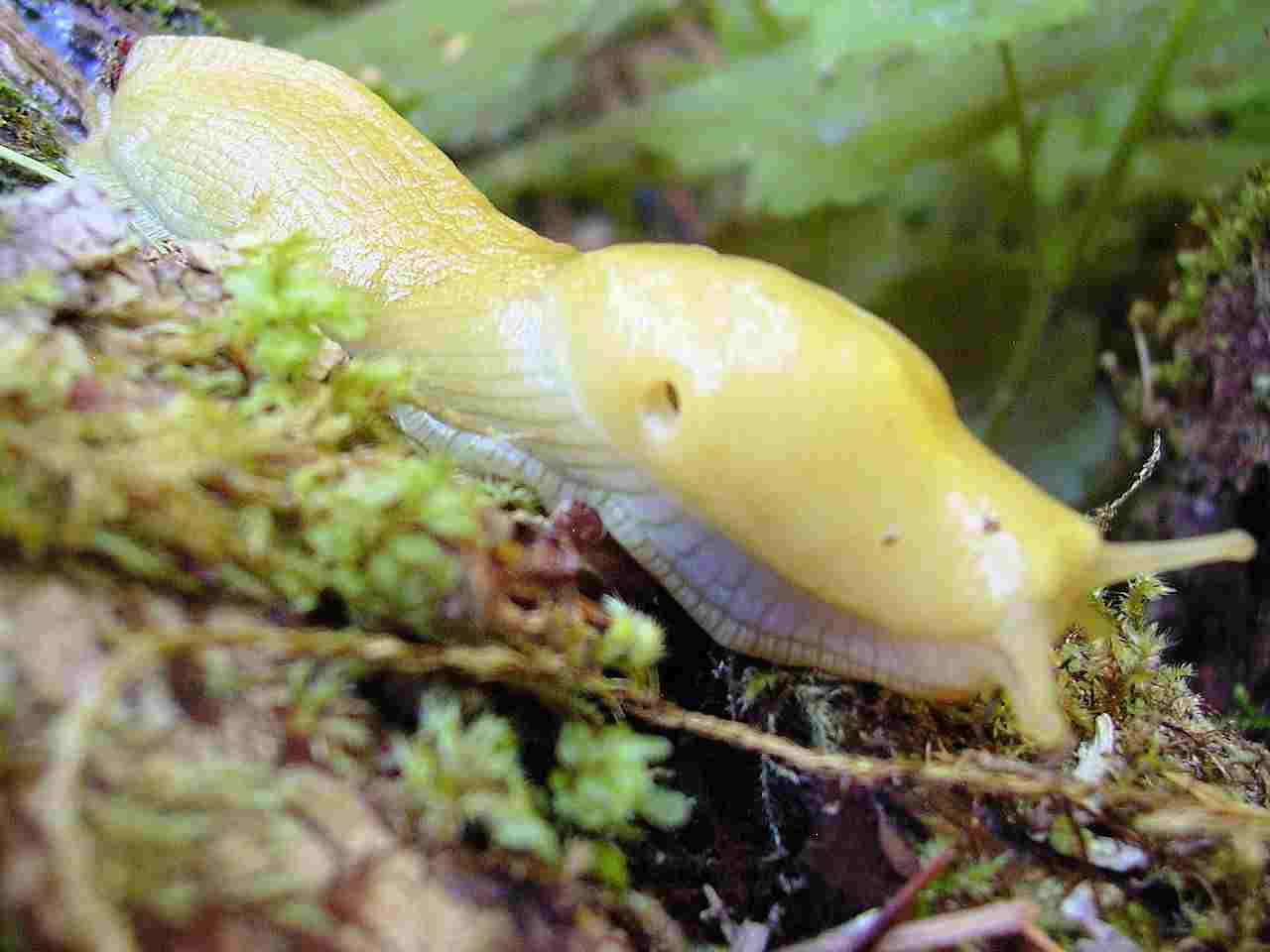
24. Springtails:
Characteristics:
Small, wingless hexapods belonging to the order Collembola.
Have a unique furcula (tail-like appendage) used for jumping.
Abundant in soil and leaf litter habitats.
Ecological Function:
Contribute to nutrient cycling through the consumption of organic matter.
Play a role in microbial community dynamics in soil.
Serve as a food source for various organisms.
Contribution to Biodegradation:
Feed on decaying plant material and fungal hyphae.
Facilitate the breakdown of organic matter through their feeding habits.
Affect nutrient cycling and soil structure through their activities.
25. Termites:
Characteristics:
Social insects belonging to the order Isoptera.
Known for their ability to digest cellulose with the help of symbiotic microbes.
Play important roles in ecosystems as decomposers and soil engineers.
Ecological Function:
Decompose wood and plant material, contributing to nutrient cycling.
Influence soil structure through nest-building activities.
Provide a food source for various predators.
Contribution to Biodegradation:
Break down cellulose into simpler compounds through microbial symbiosis.
Contribute to the recycling of nutrients in ecosystems.
Can be involved in the decomposition of dead wood and plant debris.
26. Woodlice:
Characteristics:
Crustaceans belonging to the order Isopoda.
Have a flattened, segmented exoskeleton.
Commonly found in moist environments, including soil and decaying wood.
Ecological Function:
Feed on decaying plant material, contributing to nutrient cycling.
Play a role in the decomposition of organic matter.
Provide a food source for various predators.
Contribution to Biodegradation:
Consume decaying plant material and contribute to organic matter breakdown.
Facilitate the microbial decomposition process through their feeding activities.
Influence soil nutrient availability through their interactions with organic matter.
*SCAVENGERS IN THE RAINFOREST/AUXILIARY DECOMPOSERS IN THE RAINFOREST
27. King Vulture:
Characteristics:
Large scavenging bird found in the Americas.
Recognizable by its striking colors and featherless head.
Primarily a carrion eater.
Ecological Function:
Play a crucial role in ecosystem cleanup by scavenging on carcasses.
Contribute to nutrient cycling by recycling organic matter.
May influence the behavior of other scavengers in the ecosystem.
Contribution to Biodegradation:
Consume animal remains, aiding in the decomposition of carcasses.
Help control disease spread by reducing the presence of dead animals.
Impact nutrient flow through their scavenging activities.
28. Ocelot:
Characteristics:
Medium-sized wild cat found in South America, Central America, and Mexico.
Solitary and territorial in nature.
Carnivorous, preying on a variety of small to medium-sized animals.
Ecological Function:
Play a role in regulating prey populations in their ecosystems.
Contribute to maintaining biodiversity by controlling herbivore populations.
May influence the behavior of prey species.
Contribution to Biodegradation:
Consume small and medium-sized animals, influencing the decomposition of their remains.
Participate in nutrient cycling by redistributing nutrients through their predation.
Impact the overall health and balance of the ecosystem.
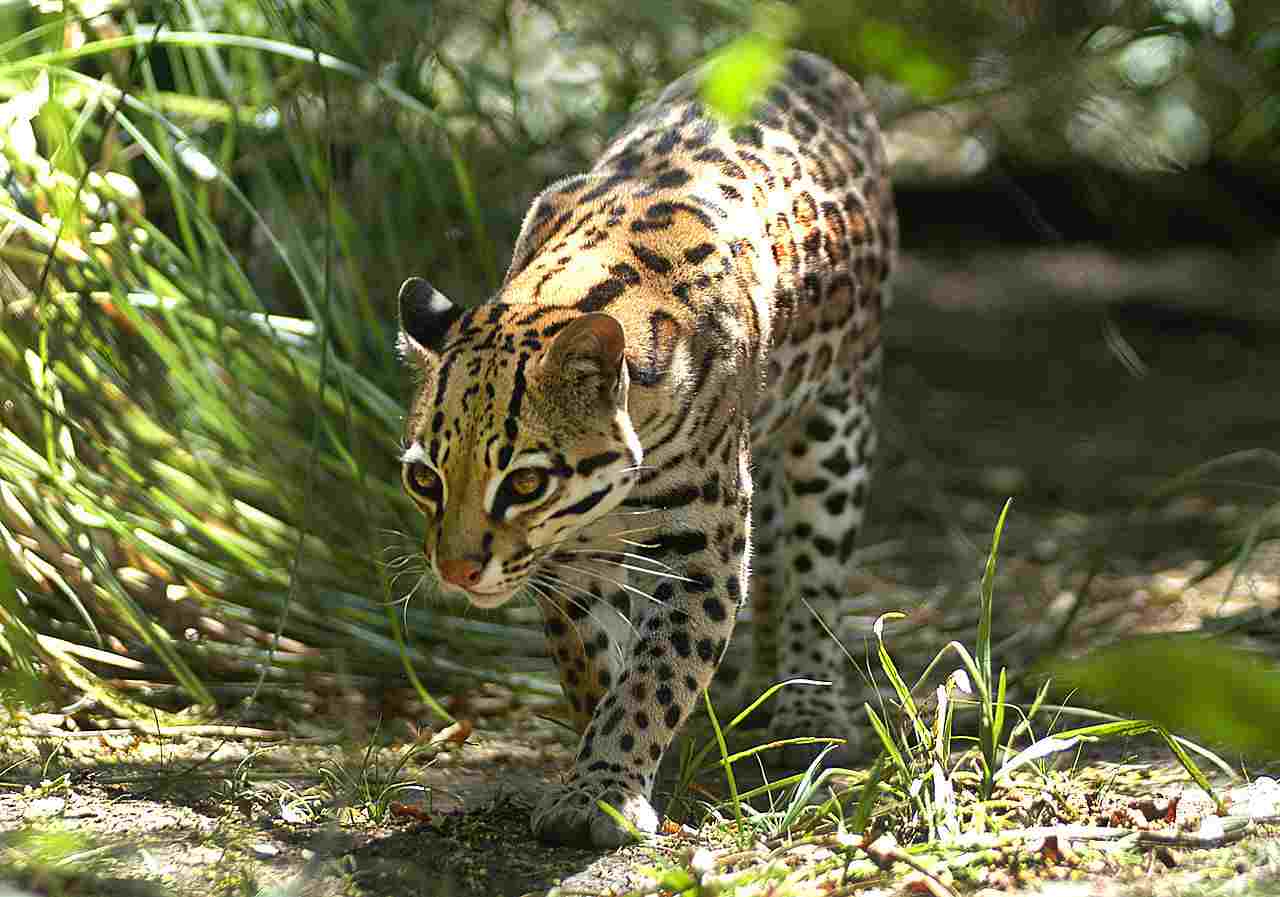
29. Turkey Vulture:
Characteristics:
Large scavenging bird found in North and South America.
Recognizable by its red head and soaring flight pattern.
Primarily feeds on carrion.
Ecological Function:
Key scavenger, helping clean up carcasses and organic matter.
Contribute to disease control by consuming potentially harmful remains.
Play a role in nutrient cycling by recycling organic material.
Contribution to Biodegradation:
Consume animal remains, aiding in the decomposition of carcasses.
Help control disease spread by reducing the presence of dead animals.
Impact nutrient flow through their scavenging activities.
Conclusion
Decomposers in the rainforest are;
- Actinobacteria
- Bacillus spp.
- Burkholderia spp.
- Clostridium spp.
- Myxobacteria
- Pseudomonas spp.
- Streptomyces spp.
- Xanthomonas spp.
- Aspergillus spp.
- Cladosporium spp.
- Entomophthora spp.
- Fusarium spp.
- Lentinula edodes (Shiitake Mushroom)
- Mycena spp.
- Trichoderma spp.
- Xylaria spp.
- Ants
- Beetles
- Centipedes
- Earthworms
- Isopods (Roly-Polies)
- Millipedes
- Slugs
- Springtails
- Termites
- Woodlice
- King Vulture
- Ocelot
- Turkey Vulture
